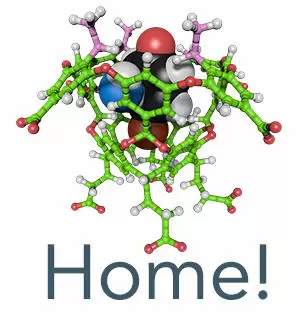Gan, H.; Gibb, B. C. Guest-mediated switching of the assembly state of a water-soluble deep-cavity cavitand. Chem. Commun. 2013, 49, 1395-1397.
2013
2012
Tang, H.; de Oliveira, C. S.; Sonntag, G.; Gibb, C. L. D.; Gibb, B. C.; Bohne, C. Dynamics of a Supramolecular Capsule Assembly with Pyrene. Journal of the American Chemical Society 2012, 134, 5544-5547.
Gan, H.; Gibb, B. C. Guest-controlled self-sorting in assemblies driven by the hydrophobic effect. Chem. Commun. 2012, 48, 1656-1658.
The extent of self-sorting in systems comprised of two different deep-cavity cavitands is investigated. The nature of the guest(s) encapsulated in the resulting assemblies is shown to profoundly influence the extent of self-sorting.
2011
Gibb, B. C. Supramolecular Assembly and Binding in Aqueous Solution: Useful Tips Regarding the Hofmeister and Hydrophobic Effects. Israel Journal of Chemistry 2011, 51, 798-806.
Abstract The self-assembly of structurally discrete entities, and supramolecular chemistry in general, continues to expand into the aqueous realm. To do so, however, requires a firm understanding of the properties of aqueous solution, and how these “change the rules” for binding and assembly relative to organic solvents. In this mini-review we highlight the state-of-the-art understanding of the supramolecular properties of water, and how these influence the design of hosts and self-assembling systems.
Li, Y.; Giles, M. D.; Liu, S.; Laurent, B. A.; Hoskins, J. N.; Cortez, M. A.; Sreerama, S. G.; Gibb, B. C.; Grayson, S. M. A versatile and modular approach to functionalisation of deep-cavity cavitandsvia “click” chemistry. Chem. Commun. 2011, 47, 9036-9038.
The surface modification of deep-cavity cavitands has been demonstrated by using the azide-alkyne “click” coupling to attach dendritic macromolecules or linear polymers onto their periphery. The resulting set of macromolecular cavitands exhibited tuneable solubility yet retained the ability to encapsulate guest molecules.
Gibb, C. L. D.; Gibb, B. C. Anion Binding to Hydrophobic Concavity Is Central to the Salting-in Effects of Hofmeister Chaotropes. Journal of the American Chemical Society 2011, 133, 7344-7347.
Liu, S.; Whisenhunt-Ioup, S. E.; Gibb, C. L. D.; Gibb, B. C. An improved synthesis of ’octa-acid’ deep-cavity cavitand.. Supramolecular chemistry 2011, 23, 480-485.
An improved synthesis of a water-soluble deep-cavity cavitand (octa-acid, 1) is presented. Previously (Gibb, C. L. D. & Gibb, B. C., J. Am. Chem. Soc., 2004, 126, 11408-11409) we documented access to host 1 in eight (non-linear) steps starting from resorcinol; a synthesis that required four steps involving chromatographic purification. Here we reveal a modified synthesis of host 1. Consisting of seven (non-linear) steps, this new synthesis involves only one chromatographic step, and avoids a minor impurity observed in the original approach. This improved synthesis will therefore be useful for the laboratories that are investigating the properties of these types of host.
Gan, H.; Benjamin, C. J.; Gibb, B. C. Nonmonotonic Assembly of a Deep-Cavity Cavitand. Journal of the American Chemical Society 2011, 133, 4770-4773.
Liu, S.; Gibb, B. C. Solvent denaturation of supramolecular capsules assembled via the hydrophobic effect. Chem. Commun. 2011, 47, 3574-3576.
The organic co-solvent induced denaturation of a series of capsular complexes formed between trioxolane guests and a water-soluble deep-cavity cavitand was examined. The results obtained demonstrate a wide range of denaturation properties, and suggest the important factors governing capsule stability.
Laughrey, Z.; Gibb, B. C. Water-soluble, self-assembling container molecules: an update. Chem. Soc. Rev. 2011, 40, 363-386.
Over the past five years, an important development in the area of self-assembling containers has been the increase in interest in those containers that function in aqueous solution. This progress is a reflection of a similar trend within supramolecular chemistry in general, and is driven in part by the need to address issues and challenges within the biological sciences, as well as a desire to develop new strategies for greener chemistries carried out in water. It is also an opportunity to learn more about fundamental topics such as the hydrophobic effect. In this critical review we discuss progress in aqueous-based self-assembling container molecules since 2005 (177 references).

